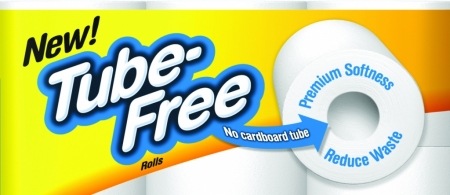
The biggest question we eco-practitioners get is: “What does the consumer really want?”
The answer is pretty simple: They want no packaging—but in a super-convenient, individually wrapped form. Um … right.
Consumers want convenience, tamper evidence and product safety, and they want the whole affair simply to disappear with little or no effort on their part once the product has been delivered.
Thoughtful consumers don’t want to be reminded of their excesses with more pictures of marine animals killed by eating packaging flotsam and jetsam, or to have to keep personally dealing with the trash that keeps appearing in their yards and parks.
Producers of packaged goods have to take it on themselves to think about what the consumer is really saying, and deliver the packaging we all really need. If you’ve been following the TerraChoice “Misleading Green Marketing Claims” studies over recent years,
it seems too many companies are still treating environmental attributes like buzzwords to be sprinkled around liberally.
In its 2010 study, only 4.5% of the claims that TerraChoice reviewed were accurate (up from 2% in their previous study).
On the other hand, TerraChoice’s “EcoMarkets 2009” report notes that more than half (56.5%) of professional purchasing companies have either a formal or informal sustainability policy.
So, the will to “do something” is certainly out there.
But it’s not enough to say your product does something—you have to be sure it really does it. And, most importantly, be sure that the intended effort really matters. For example, the recyclability of a material that never should have been produced in the first place is not really a plus point to celebrate, and consumers are realizing that fact.
As companies look to create real solutions rather than buzzwords in packaging form, third-party certifiers like TerraChoice’s Eco-Logo and the UL-Environment initiative are teaming up to help sort out what a real solution looks like.
Taking a life cycle approach rather than looking at a single attribute, they’re considering the entire system of consumer goods manufacturing.
This is actually a huge step toward finding long-term solutions.
And, by using the market to help drive change, certifications can realize changes faster than waiting for legislators who are often more reactive than proactive.
While the consumer might wish that those of us in industry can simply snap our fingers and make eco-happiness occur overnight, we all know it will take incremental changes both in technology and consumers’ habits to make change stick.
Our task is to keep plugging away and do the best we can to make only what we really need.
Having come a long way from using old-growth wood to trying to create more sustainable game-changing products, Kimberly-Clark has come very close to making no-package a reality.
The company’s new tubeless rolls of toilet paper can help make a dent in reducing the 160 million pounds of toilet paper tubes produced annually in the U.S. that are destined for the trash.
Eliminating the need for tubes altogether is a big deal, because, surprisingly, many curbside recycling programs do not process paperboard tubes.
The gains from this simple initiative include resource demand reduction, manufacturing efficiencies, lower transport energy use, and trash reduction.
One can see the simple question Kimberly-Clark may have asked themselves: Do people want tubes of toilet paper or do they just want to feel clean?
Wendy Jedlicka, CPP, is with Jedlicka Design Ltd.
(www.jedlicka.com),
[ add comment ] ( 108 views ) | permalink |




 ( 3.1 / 2169 )
( 3.1 / 2169 )

 Calendar
Calendar